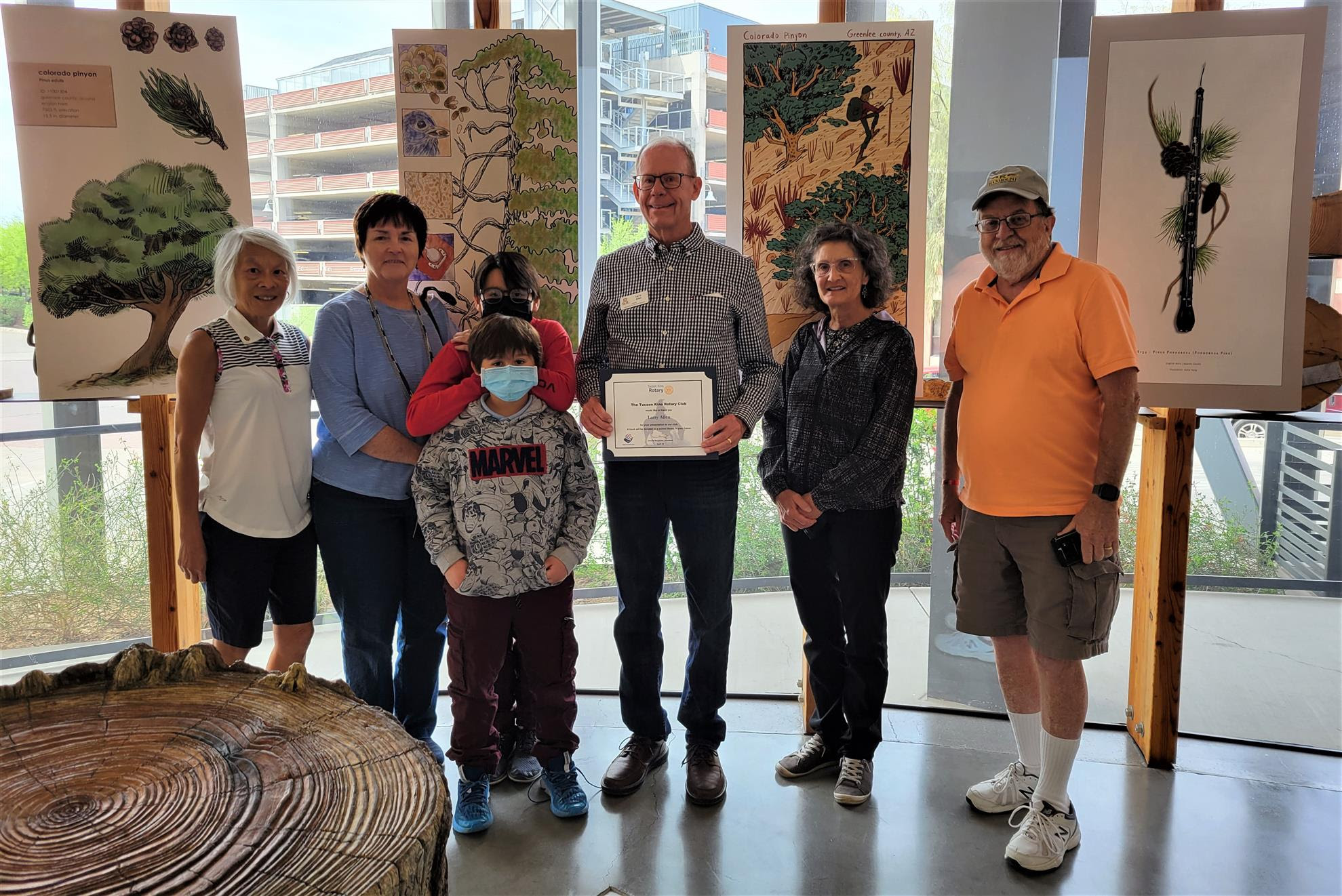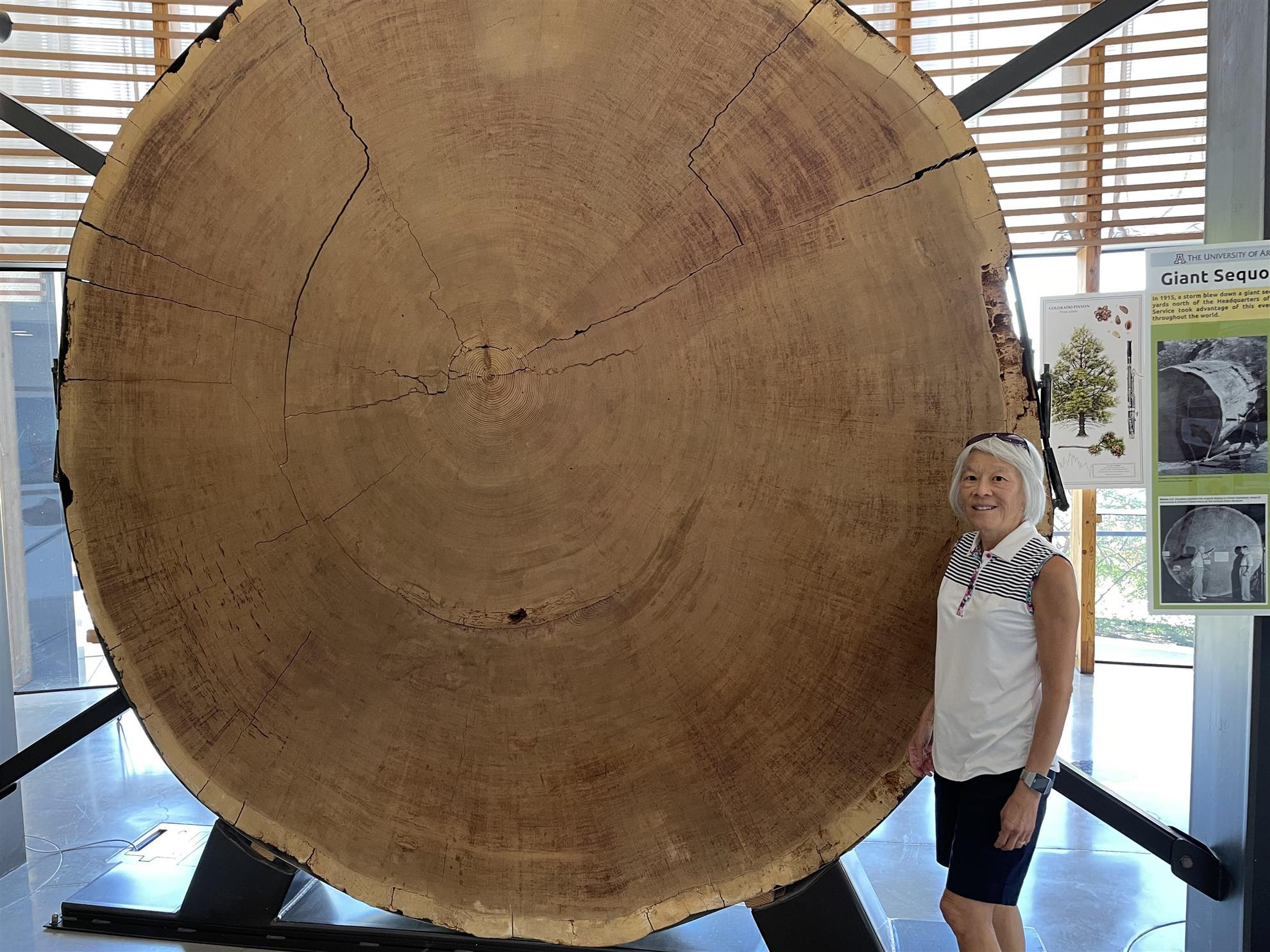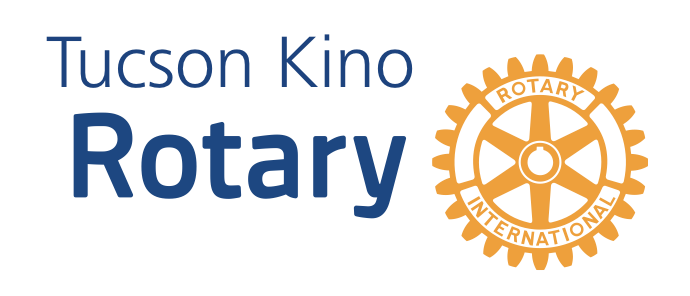Recently, Tucson Kino Rotary toured the wonderful facility on the campus. Here is some history of the lab:
"In 1937, the scientific study of tree-rings in America was formalized by the creation of the Laboratory of Tree-Ring Research (LTRR) here at the University of Arizona in Tucson. By that time, founder Andrew Ellicott Douglass had been working with wood for over 30 years and so the tradition of dendrochronology here in Tucson is older than the Lab itself.
The LTRR has long since given up the distinction of being the nation's only dendrochronology lab, but we have helped to found many dendrochronology labs around the world.
Our unique heritage is still a source of pride, and it encourages us today to remain dedicated to our ideals: excellence in research, excellence in teaching, and excellence in outreach."

l - r, Joan Fawcett, Chris Bejarano and her grandsons Elias and Noah,
Tree-Ring Docent Larry Allen, Monique Soria
and David Fawcett. Not pictured Raul Bejarano behind the camera.
Docent Larry talked about the history of the science, the construction of the present facility and let us see samples of tree slices, borings and photos of famous or unique trees.

Great Basin Bristlecone Pine
The Great Basin Bristlecone Pine (Pinus Longaeva) has been deemed the oldest tree in existence, reaching an age of over 5,000 years old. The Bristlecone pines' success in living a long life can be attributed to the harsh conditions it lives in.
In the lobby was this cross section of a Sequoia which was blown down in 1912. It started growing in the 3rd century CE (common era or AD).

Joan Fawcett is dwarfed by this
Wonderful Feat of Nature
Then we toured the facility including using a microscope to examine a boring, seeing photos taken by students and faculty, and learning more about the science. It was a very interesting morning and we highly recommend the tour.
For more information visit:
